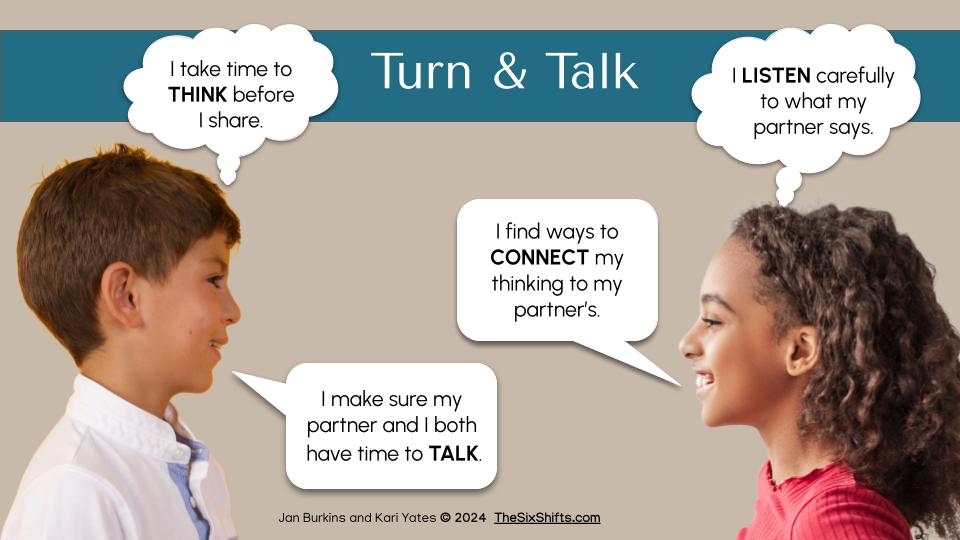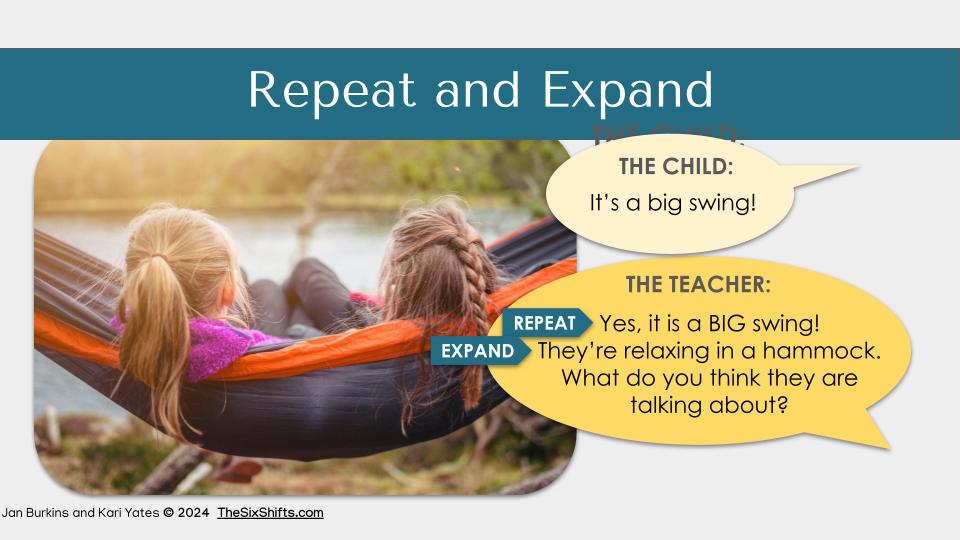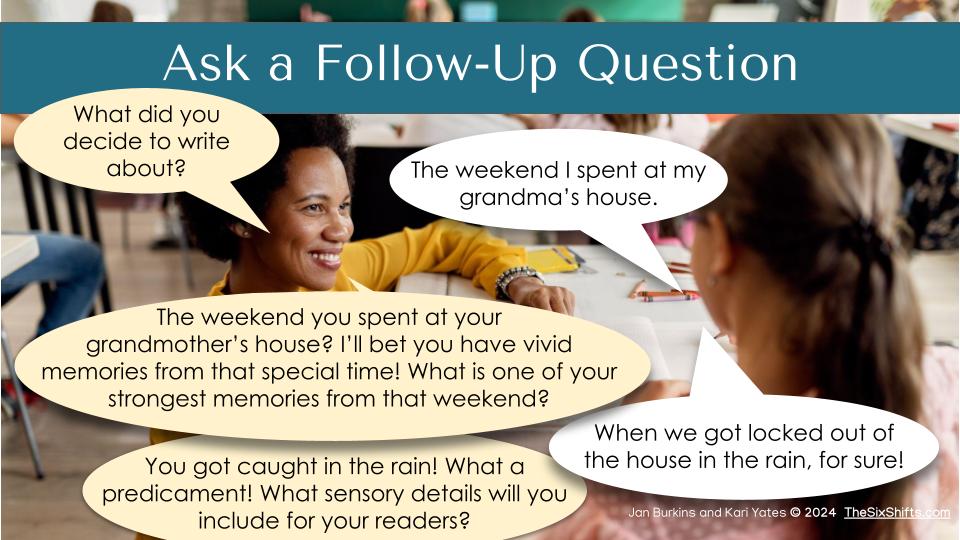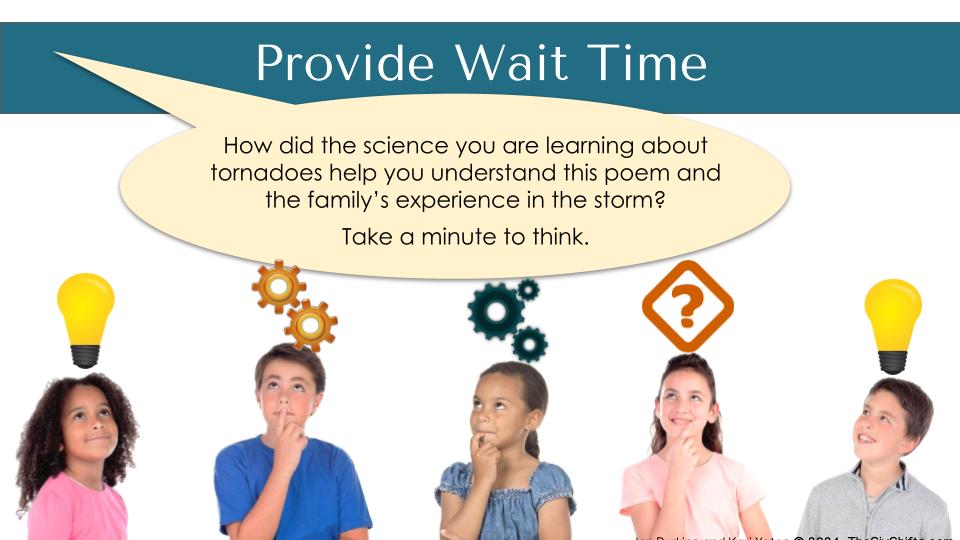Reading Comprehension Can’t Happen Without Language Comprehension
Lately, we’ve noticed that some small but mighty practices for supporting language development aren’t showing up so much in classrooms. These instructional moves are ways to teach vocabulary or language structure in context throughout the day rather than just when you’ve developed a dedicated vocabulary lesson plan or grammar lesson.
Most of us learned one or more of these language development moves in a teaching 101 class. But it seems that in our efforts to course-correct our word-reading instruction and language development (and the vocabulary learning that is intrinsic to these), it’s easy for some simple but powerful instructional moves to get pushed to the margins.
Overcorrecting Can Create Other Difficulties
As we explored in this previous post (which focused on language comprehension vs. reading comprehension), language comprehension is a PRE-requisite for reading comprehension. And, since we want to support students in becoming readers—not just decoders—then our language development efforts have to be deliberate.
Easier said than done, right?
Don’t worry! To help you get your language-building ducks in a row, we offer five powerful language development strategies that are important for EVERY TEACHER to use every day. All five of these instructional moves are relatively easy to implement and require no new materials. You can start using them as soon as you finish reading this post. 😃
1. Turn-and-Talk.
Rather than calling on one child after asking an open-ended question, prompt all of your students to think for a minute! Then, let them all answer the question in conversation with a partner. If you listen in on their conversations, you will get vital information about the thinking of many students rather than just calling on one or two. With turn-and-talk, all students participate in thinking and responding, and you get more formative data. Win-win!

2. Repeat and expand.
When a child says something, repeat what they say and add a little more to it. Based on the work of Grover Whitehurst (1988), this instructional move allows you to affirm children’s verbal responses while authentically introducing new vocabulary or more sophisticated sentence structures. Here is a free download that walks you through this process and gives a specific example. You can also read more about this instructional move in Shift 1 of Shifting the Balance K-2.

3. Elevate your language.
Integrate interesting words into your language all day long. If children know about 95% of the language you are using, then they can use context to begin to acquire the 5% that you make novel, robust, and varied. You can learn more about this instructional move, as well as a lot more about vocabulary instruction, in Shift 3 of Shifting the Balance 3-5.

4. Ask a follow-up question.
Many conversational exchanges in our classrooms are comprised of a short back-and-forth between teacher and student, but by getting in the habit of following up with even one additional open-ended question, we can cultivate deeper thinking and expand oral language. In their book Strive-for-Five Conversations (2023), Zucker and Cabell offer practical ideas for using follow-up questions to take language development to the next level.

5. Provide Wait Time.
Wait time—which is really think time—involves inserting an intentional pause between your questions and student responses. This simple instructional move allows all students the opportunity to process the question, formulate their thoughts, and actively engage in thinking before one or two quick-to-answer students do it for them. Allowing students to pause to think fosters a culture where more students are encouraged to develop their ideas and can lead to richer discussions, increased confidence, and deeper comprehension.

There you have it: 5 ways to develop language comprehension on the run. Odds are, these simple instructional moves aren’t new to you, so we hope this little reminder validates these familiar (and powerful) language development practices.
If These Language Development Strategies Are So Simple, Then Why Isn’t Everyone Doing Them Already?
In theory, none of these strategies is difficult. But what can be tricky is remembering to use them in the moment!
Our neural pathways for responding to students, communicating classroom routines, and asking and answering questions all become rather entrenched. So, to truly embed any of these practices in automated and integrated ways requires a great deal of intentionality. And even if you’re pretty comfortable with all of these moves already, it’s often easy to overestimate how much we are actually using them.
So, keep a tally, enlist a coach, record yourself, use sticky notes, or maybe even get your students involved in helping you remember to upgrade your habits. Getting intentional about making these five routines more routine in your classroom is a great starting point for getting serious about language development.
References
Whitehurst, Grover, Francine L. Falco, Christopher J. Lonigan, Janet E. Fischel, Barbara D.
DeBaryshe, Marta C. Valdez-Menchaca, and Marie B. Caulfield. 1988.
“Accelerating language development through picture book reading.”
Developmental Psychology 24(4): 552–559. doi: 10.1037/0012-1649.24.4.552
Zucker, Tricia, and Sonia Cabell. 2023. Strive-for-Five Conversations: A Framework that Gets
Kids Talking to Accelerate Their Language Comprehension & Literacy. New York, NY: Scholastic.
-

Jan Burkins and Kari Yates are authors, speakers, and consultants, who are dedicated to helping teachers around the world translate reading science into simple instructional moves that help teachers make learning to read easier for their students while still centering meaning-making, engagement, and joy.
Recent Posts


